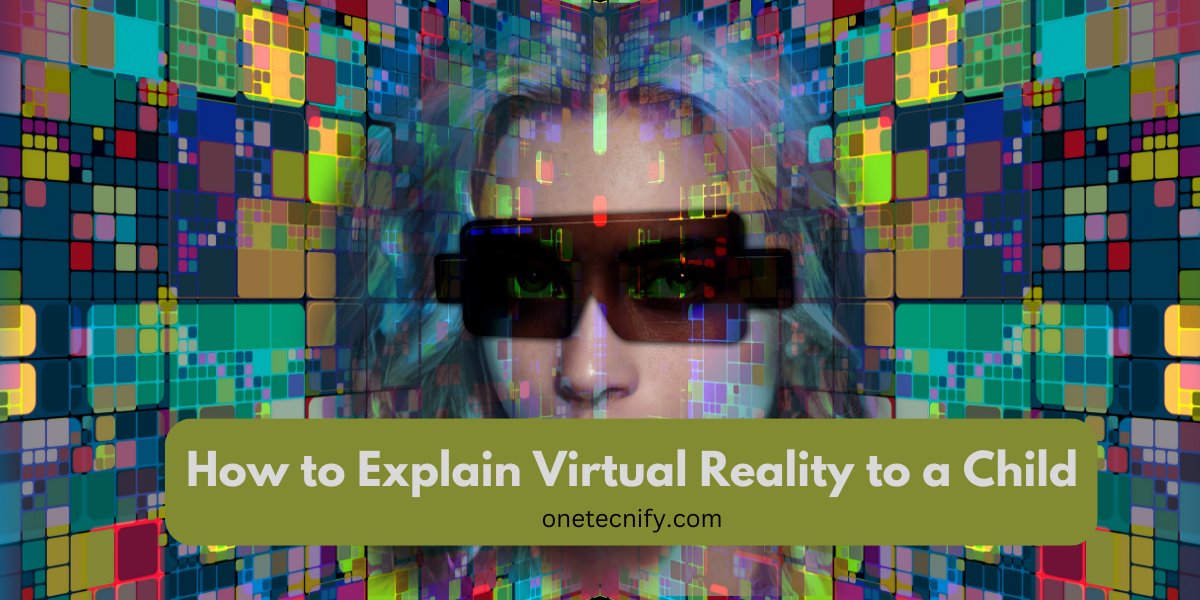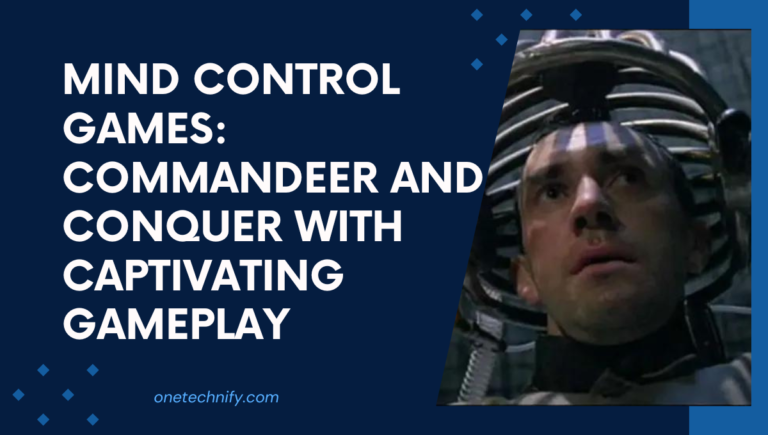What is Virtual Reality to a child?
Virtual reality (VR) gaming is like stepping into a whole new world of 3D gaming without leaving your living room! Imagine strapping on some special goggles that transport you to amazing video game places and let you do incredible things in stereoscopic 3D. VR gaming creates a computer-generated environment that feels so real, it’s like you’re actually there, unleashing your imagination.
With virtual reality, kids can have thrilling 3D gaming adventures, visit far-off lands, and even have an educational experience in exciting new ways. It’s not just about playing games; it’s about exploring and discovering things you never thought possible. Whether it’s diving deep into the ocean or flying through space, virtual reality opens up endless possibilities for entertainment, education, and exploration, stimulating imagination.
So, if you’ve ever wondered how to explain virtual reality to a child, just think of it as a magical portal that lets them experience the impossible from the comfort of their own home. Imagination meets reality with VR devices like VR headsets in a dedicated VR room. Get ready to embark on extraordinary journeys with virtual reality!
Benefits of Virtual Reality in Education
Virtual reality (VR) offers numerous benefits and advantages in education, especially in the realm of game development. It enhances learning by providing interactive and engaging educational experiences, making it easier for children to understand complex concepts and unleash their imagination. With VR, abstract ideas can be visualized in a more tangible way, helping students grasp difficult topics with ease and bridge the gap between the computer world and the physical world.
One of the key advantages of virtual reality is its ability to enable kids to explore the physical world through their computer. Through VR technology and headsets, children can take virtual field trips to historical sites or dive into the depths of the ocean without leaving their classrooms. This immersive experience allows them to learn about different places and cultures firsthand, expanding their knowledge beyond textbooks.
Using virtual reality in education helps kids develop critical thinking skills through engaging with virtual simulations and scenarios. This fosters creativity and innovation in game development as players problem-solve in a dynamic VR experience on the computer.
In addition to these benefits, augmented reality (AR) and virtual reality (VR) provide a platform for collaborative learning. Students can work together in virtual environments, sharing ideas and collaborating on projects regardless of their physical location. This promotes teamwork and communication skills while preparing them for future careers that involve remote collaboration using computer-generated reality headsets.
To summarize, the benefits of incorporating virtual reality technology and VR headsets into education are enhanced learning experiences. By using VR technology, students can immerse themselves in a virtual world, exploring concepts and ideas that were previously difficult to grasp. With the help of a computer and VR room, students can engage in interactive simulations, gaining a deeper understanding of complex subjects.
- Enhanced learning through interactive experiences
- Visualization of abstract concepts
- Virtual field trips for exploration beyond the classroom
- Development of critical thinking skills
- Promotion of collaboration among students
By leveraging the power of virtual reality headsets, educators can create an immersive virtual reality experience that maximizes engagement and understanding among children in a virtual world.
Enhancing Social and Emotional Development with Virtual Reality
Virtual reality (VR) headsets are an incredible tool that can help children develop their social and emotional skills in a virtual environment. By immersing themselves in simulated scenarios, kids can gain valuable insights and experiences that enhance their understanding of others and themselves.
One of the key benefits of virtual reality (VR) technology is its ability to promote empathy. Through augmented reality, kids are able to step into someone else’s shoes and see the world from different perspectives using a virtual environment. This unique perspective-taking experience allows them to develop a deeper sense of compassion and understanding towards others while wearing a headset.
In addition to empathy, virtual reality (VR) technology provides a safe space for kids to practice social interactions and communication skills. Within the VR environment, they can engage in conversations, collaborate with others, and navigate various social situations using VR headsets. This hands-on approach enables children to build confidence in their abilities while honing their interpersonal skills with VR content.
Moreover, VR experiences can be utilized as exposure therapy techniques in a controlled environment for kids. For instance, if a child has fears or anxieties about certain situations or objects, a virtual reality headset can offer gradual exposure that helps them overcome these challenges. By gradually introducing them to feared stimuli within the simulated environment, VR headset empower children to confront their fears at their own pace.
By immersing themselves in virtual scenarios using augmented reality and VR technology, kids also learn how their actions impact others in the real world, fostering emotional intelligence. They can explore cause-and-effect relationships within these environments, gaining insight into how their choices affect different outcomes in real life. This heightened awareness allows children to understand the consequences of their actions and develop empathy toward those affected by them.
Exploring the History of Virtual Reality
- The concept of virtual reality (VR) dates back to the 1960s, when Ivan Sutherland created “The Sword of Damocles,” the first VR head-mounted display system. Today, VR headsets have become increasingly popular, offering immersive experiences with a wide range of VR content. Additionally, augmented reality (AR) has also gained traction, providing interactive experiences that blend the real and virtual worlds. Virtual reality and augmented reality are super awesome! Both kids and adults can have fun with them. Not only are they fun, but they can also teach us new things.
- In the 1990s, virtual reality gained popularity with advancements like Sega’s VR headset and Nintendo’s Virtual Boy console, appealing to both kids and adults.
- Jaron Lanier coined the term “virtual reality” in 1987, describing it as an immersive digital experience that tricks our senses into believing we are somewhere else. Today, VR headsets provide a way to fully immerse ourselves in this virtual reality, while VR content offers a variety of experiences for both adults and kids.
- Today, virtual reality (VR) has evolved into a sophisticated technology with applications in gaming, healthcare, and education. With the help of a VR headset, users can immerse themselves in a whole new world of interactive VR content. This technology is not just limited to adults; even kids can enjoy the immersive experiences that VR offers.
Virtual reality (VR) technology has come a long way since its inception. Let’s take a brief journey through its history, exploring how VR has evolved and its impact on kids. Additionally, we’ll touch on the emergence of augmented reality (AR) and its potential for enhancing children’s experiences.
- 1960s: The Birth of VR
- Ivan Sutherland introduced “The Sword of Damocles,” a head-mounted display system that laid the foundation for future developments in virtual reality (VR). This groundbreaking technology has paved the way for advancements in augmented reality (AR) as well. It is fascinating to see how these immersive experiences are now accessible to kids as well.
- 1990s: Popularity Soars
- Sega’s VR headset and Nintendo’s Virtual Boy console brought virtual reality into mainstream consciousness during this decade, captivating kids.
- 1987: Coining the Term
- Jaron Lanier coined the term “virtual reality,” defining it as an immersive VR experience that tricks our senses into perceiving a different environment, making it suitable for kids.
- Today: A World of Possibilities
- Virtual reality (VR) has become an integral part of various industries, such as gaming, healthcare, and education. VR is especially popular among kids, as it offers them an immersive and interactive experience.
- VR experiences transport kids to real world simulated environments where they can interact with virtual content using specialized devices like VR headsets.
Preparing Kids for Future Career Opportunities
Virtual reality skills are becoming increasingly valuable in the job market. By familiarizing kids with VR at an early age, they can develop a solid foundation for future careers in fields like game development, architecture, or virtual design.
Virtual reality offers unique opportunities for kids to engage in an educational experience that goes beyond traditional methods. With VR, children can explore new ways of learning and prepare for jobs that may not even exist yet. They can embark on virtual field trips to historical sites, explore distant planets, or interact with simulations of scientific experiments, fostering creativity and innovation.
Learning to navigate virtual environments and work with VR tools equips kids with essential digital literacy skills needed in the modern workforce. They gain hands-on experience using cutting-edge technology and learn how to manipulate objects in three-dimensional spaces. These skills are highly sought after by employers across various industries.
Parents play a crucial role in monitoring their children’s use of VR tools to ensure safety and appropriate usage. It is important to establish guidelines regarding screen time and age-appropriate content. By providing guidance and setting boundaries, parents can create a safe learning environment where kids can explore the possibilities of virtual reality.
Kid-Friendly Images and Games in Virtual Reality

Virtual reality platforms offer a wide range of kid-friendly content such as educational games, interactive stories, and immersive experiences designed specifically for children. Kids can explore fantastical worlds, solve puzzles, or learn about animals through captivating VR experiences tailored to their interests.
- Virtual reality (VR) games for kids promote active engagement and physical movement while providing entertainment and educational value.
- With carefully curated content suitable for kids, parents can ensure their children have safe and enjoyable VR experiences.
In virtual reality games, kids can:
- Explore: Children can embark on exciting adventures in virtual worlds where they get to be the hero of their own story. They can visit ancient civilizations, travel to outer space, or dive deep into the ocean without leaving the comfort of their home.
- Learn: Educational VR games allow kids to acquire knowledge in an interactive and engaging way. They can discover new concepts in subjects like science, history, or math through hands-on experiences that make learning fun.
- Interact: VR games encourage children to use their problem-solving skills by presenting them with challenges and puzzles to solve. They can unravel mysteries, unlock hidden treasures, or build structures using virtual tools—all while having a blast!
- Immerse: By putting on a VR headset, kids are transported into a whole new world where they become fully immersed in the experience. They can interact with characters and objects as if they were right there beside them.
- Play together: Many VR games offer multiplayer options that allow kids to play with friends or family members who are also wearing headsets. This adds a social element to the experience and enhances cooperation and teamwork skills.
With appropriate VR content available for kids of different age groups and parental controls at hand, parents can rest assured knowing that their children are engaging in safe and enriching virtual reality experiences.
So why wait? Let your kids’ imaginations soar and introduce them to the exciting world of VR games today!
Conclusion: How to Explain Virtual Reality to a Child
In conclusion, virtual reality (VR) offers a multitude of benefits for children. It enhances their education by providing immersive and interactive learning experiences. With VR, kids can explore historical events, visit far-off places, and engage in hands-on activities that make learning fun and memorable.
Moreover, virtual reality promotes social and emotional development in children. It allows them to interact with others in virtual environments, fostering teamwork, empathy, and communication skills. Through VR experiences, kids can also face their fears or practice challenging situations in a safe and controlled environment.
Understanding the history of virtual reality is crucial, as it helps kids appreciate the technological advancements that have led to its current state. By exploring the origins and evolution of VR, children gain a deeper understanding of how this technology has shaped our world today.
Virtual reality also prepares kids for future career opportunities by exposing them to cutting-edge technology at an early age. As they become familiar with VR tools and applications, they develop valuable digital skills that will be increasingly relevant in various industries.
Kid-friendly images and games in virtual reality (VR) make it engaging and enjoyable for kids. The colorful visuals and interactive elements captivate their imagination while providing entertainment and educational value simultaneously.
To fully harness the potential of VR for kids, it is important for parents to ensure safety measures are in place. Parents should monitor usage time and choose age-appropriate VR content that aligns with their child’s interests and developmental stage.
In conclusion, introducing kids to the exciting world of VR opens up endless possibilities for learning, creativity, and personal growth. Embracing this technology can empower young minds to explore new horizons while having fun along the way.
FAQs:
Q: Is virtual reality safe for children?
Virtual reality (VR) can be safe for kids when appropriate safety guidelines are followed. Parents should ensure proper supervision during VR usage sessions and select age-appropriate content that suits their child’s developmental stage.
Q: How can virtual reality benefit a child’s education?
Virtual reality (VR) enhances education for kids by providing immersive and interactive learning experiences. It allows children to explore subjects in a more engaging and memorable way, improving retention and understanding.
Q: Are there any career opportunities related to virtual reality?
Yes, virtual reality is an emerging field with various career opportunities for kids. As technology continues to advance, skills in VR development, design, and content creation for kids will be highly sought after.
Q: Can virtual reality help children overcome fears or phobias?
Yes, virtual reality (VR) can be used as a therapeutic tool to help kids face their fears or practice challenging situations in a safe and controlled environment. It provides a gradual exposure that can aid in overcoming anxieties.
Q: What age is appropriate for introducing virtual reality to children?
A: The appropriate age for introducing virtual reality to kids may vary depending on their maturity and readiness. It is generally recommended for children aged 7 and above due to considerations of physical comfort and understanding of the VR technology. However, parental discretion is advised.






